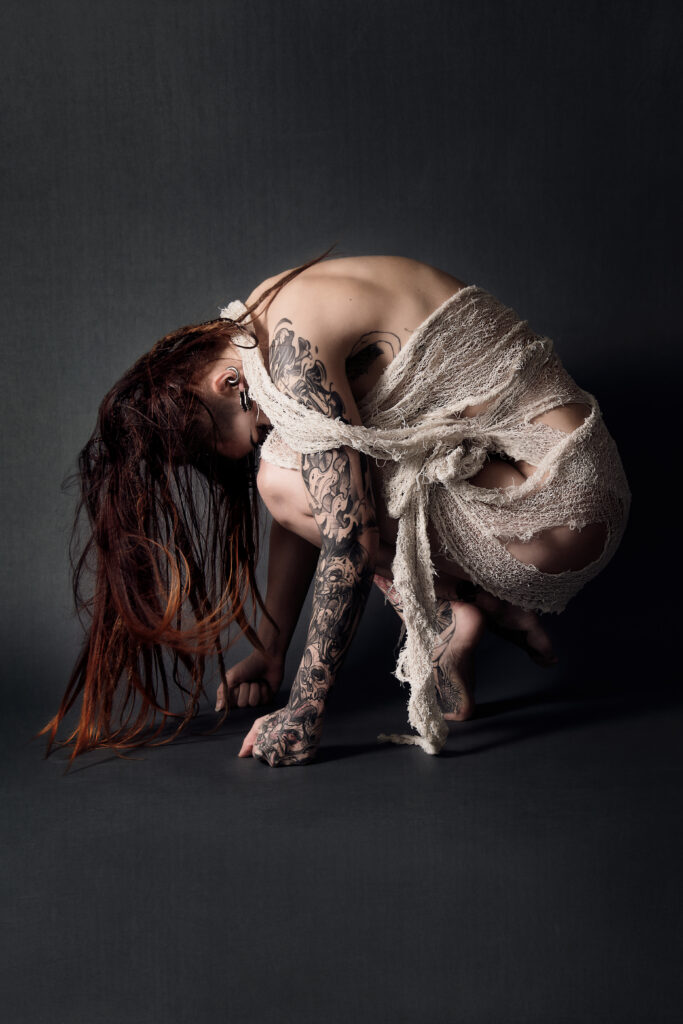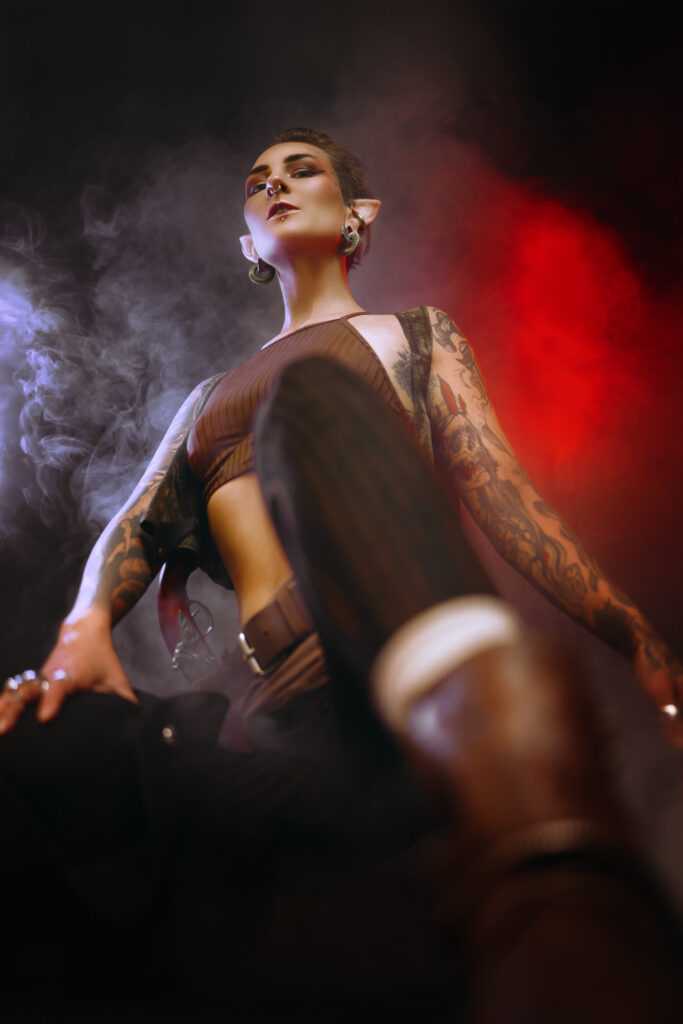…to the page of Rouge Mystique
I dance Fusion and Burlesque – blending these movement forms with Flow Art and Cosplay.

Photo: Cornelius Schiffmann
What is Flowart and Burlesque? What is Fusion? Where do the terms Bellydance and Tribal Fusion come from?
Bellydance and Tribal Fusion both originate from traditional and folklore dances. The term „bellydance“ was established in the West because Westerners were unfamiliar with it and referred to it as „danse du ventre,“ which means bellydance in French. With Hollywood and Western dancers, it evolved into entertainment and performance rather than tradition. Dancers began showing their bellies, and the dance became sexualized. The movements were adapted and integrated into Western styles. Today, the term „bellydance“ is both rejected and embraced. Some dancers identify with it and their roots, feeling proud, while others reject it due to its associations with anti-feminism and cultural appropriation.
After the „Hollywood bellydance“ era, „American Tribal Style“ (ATS) developed. It is a group dance that uses cues for improvisational dance. Although it was claimed to be the first dance with cues, such cues existed naturally in folklore and traditional dances long before. The inspiration for ATS came from „tribes.“ Today, many have lost touch with the roots of these dances. Understanding the origins, traditions, and music is crucial to appreciating the dance fully.
after bellydance and ATS, another form emerged: Tribal Fusion, now simply known as „Fusion,“ due to growing awareness of cultural appropriation. This dance style is very young, but stands for itself.
What do I, as a white German woman, identify with?
I deeply love the art of contemporary, ballet, and modern dance, but I never danced them. I saw myself more as a drawing artist rather than a physical artist.
At times, I struggled to see myself as an artist at all because it seemed unnecessary and unimportant in our society. Seeing myself as an artist came much later. I associated it with laziness, and not having a „real“ job. Now, I’ve grown a little wiser. Without stories, without dance and music, without compassion and empathy, without voices from the past and present – what are we? Art plays a very important role in our society.
In our modern culture, in my family and surroundings, we didn’t have traditional dance or musicians. I wasn’t connected to rhythmic movement as much. I am very proud and thankful for the other skills my family gave me. When I found Fusion dance in my 20s, it was something new that felt so good for my body. It was almost like finding something I had been missing for so long: the shakes and shimmies of proud women, the connection and community of independent women.
At 23, I started getting into Burlesque, and I loved it. The sensuality, the weirdness, the freedom. The variety shows and bar shows. I also began connecting more with queer artists, political activists, and so on.
So I identify with the feminist movements, freedom of choice, and freedom in expressing the way one wants to express and move. I am not a folklore nor bellydancer. I am a burlesque dancer, getting inspiration from all those aspects mentioned above.
A brief history of burlesque:
Burlesque originated from poverty and the need to express oneself. Initially called „burleske,“ a funny, weird theater, it evolved into „burlesque,“ a more erotic show. The term „burleske“ comes from the Italian word „burlesco,“ which apparently means something like „fun.“ It moved to Broadway, and suddenly women who otherwise had to prostitute themselves had an opportunity to earn good money and be independent. Of course, patriarchy didn’t like independent women, so it was banned in the 1930s.
Luckily, after the Second World War, it made a comeback. It became less about removing clothing and more about the artist’s personality, presence, costume, and interaction with the audience. It questioned patriarchal structures. In modern times, it isn’t as popular because the fashion and beauty industry gained more popularity with a new beauty standard.
Back to my story:
I focused more on my drawing art. I started learning tattooing in 2017, and it became my full-time job. I became self-employed, and in 2022, I started my own studio with a friend. Around the same time, I began participating in more shows and performing projects.
At the beginning of 2024, I took over the tattoo studio and now balance my tattoo art vs my Burlesque journey.
You can learn more about my tattoo journey, which is deeply connected to my body and soul, on www.gwendolin.tattoo.
Thank you for reading.
Photo 1-3 : Cornelius Schiffmann / Photo 4 : Lisa Recklies



